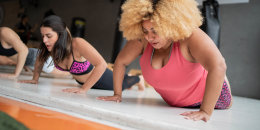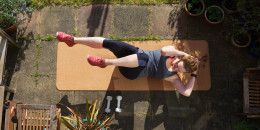Ready to pick up the pace after making a habit of walking for exercise? Running could be your next challenge.
“Running is a sport,” Dr. Paul Ochoa, a physical therapist and owner of F Squared Physical Therapy in New York City, tells TODAY.com. And beginners should know that like any sport, it takes time to learn, and there will be some pain and discomfort as you get used to it.
New runners need to progress slowly or risk getting injuries. Many beginners make the mistake of doing too much too soon. It’s normal to be sore, but if you experience acute pain or pain that doesn’t go away, seek help from a physical therapist, Ochoa advises.
If you can, get a running coach to help you move at the correct pace.
How to start
“You’re just gently nudging in,” says Johnson. “You’re allowing the body time to adapt.” Start with a brisk walk to prepare the body for the stress of running, says Chris Johnson, physical therapist, endurance coach and owner of Zeren PT LLC in Seattle. “I call it fitness walking, which is brisk walking with the arms pumping 3 to 3.5 miles per hour,” he says.
If you haven’t been walking regularly, be sure to do at least two to three weeks of fitness walking for 30-45 minutes a day, with longer walks on the weekends. “That would slowly morph into a walk-run,” says Johnson, “and then eventually continuous running.”
Begin with short intervals of running followed by short intervals of walking, then slowly progress to longer intervals of running and shorter intervals of walking. Follow the “rule of two” — two minutes of running followed by two minutes of walking, six to seven times, for about 30 minutes.
Once you’ve mastered that, go to three minutes of running and one minute of walking. When that starts to feel easy, increase your running to four minutes followed by one minute of walking.
What to wear
A good pair of sneakers can also help to reduce injuries — footwear should allow your foot to move fairly freely and not be too heavy, according to Ochoa. He says it should also have a medium-level cushion.
When shopping for sneakers, Johnson advises pulling out the inner liner (if possible) and stepping onto it. “If your foot is expanding over that inner liner, the shoe is probably not going to work,” he says. “That inner liner should capture your foot.”
How to train
Warm up before your runs to reduce risk of injury. This could be a fast-paced walk for five to 10 minutes where you are “building up a nice little sweat” before you run, Ochoa says.
Concentrate on your stride as well: A longer stride has a more cumulative load on your legs, since you are covering more distance. Therefore, long strides can increase your chances of developing injuries, so it’s better to take quicker and shorter steps per minute, according to Johnson. A running app can help you keep track of your cadence, or your steps per minute.
Stretching can increase blood flow and help you cool down.
For more tips on form, here are 10 more need-to-know training tips for new runners.
How to run longer and faster
Once you’ve built some endurance, you can start increasing the intensity. “My goal is to get someone up to running four days a week, every other day, and from there to work them up to perhaps an hour of continuous running, if that’s consistent with their goals,” Johnson says.
To work on your intensity, increase the pace towards the end of your run. For example, if you run for 45 minutes, the first 30 would be at conversation pace (running slow enough to speak comfortably in full sentences), and the last 15 minutes would be about 10-15 seconds faster per mile, followed by a five-minute walk and cool down, he says.
How to cross train for runners
Both Ochoa and Johnson say strength training is a great way to reduce injuries. While strengthening muscles above the knee is important, including the hips, quads and glutes, be sure not to neglect your calves, which take on a disproportionate load during running, according to Johnson.
“Below the knee is key when it comes to conditioning or running musculature,” he says, noting that calf raises can strengthen these muscles.
While a strength-training program will look different for everyone, Johnson said most people should train about 2-3 times a week at about 70% of their maximum effort.
How to stay motivated
Running isn’t just physical — it's a mental sport, too. And every runner will have those days where it’s harder to get yourself out to hit the pavement. Here are some ways to stay motivated during your run:
Master your inner dialogue
What you tell yourself can make all the difference in keeping a positive mindset during your workout. Sheinelle Jones, who is training to run the New York City Marathon in November has two mantras she tells herself to stay motivated during long runs: “I think you constantly have to remember your reason why,” she said in an Instagram video documenting her longest run yet (an impressive 20 miles). “I also have to keep remembering that we’re pouring into ourselves,” she said. “If not now, when?”
For Al Roker, it’s what he doesn’t say that makes all the difference. Words like “only” that belittle the steps he was able to get in are off the table: So many of you on our Facebook page were talking about, ‘Oh you only did this, you only did that,’” he told Start TODAY members in a Facebook video. “The fact is, you got it done, you made it happen, and that’s what counts.”
Pick a playlist
Jones also says the right music can make all the difference (she’s partial to Beyoncé). Need some inspiration? Check out these walking and running playlists that keep Al Roker, trainer Stephanie Mansour, and other Start TODAY members moving.
Set a goal
Having a bigger goal to work toward will help keep you committed to a running routine — even on days you don’t feel like logging those miles. Sign up for a race or challenge yourself to master a certain distance — our 5k challenge is a great place to start.










